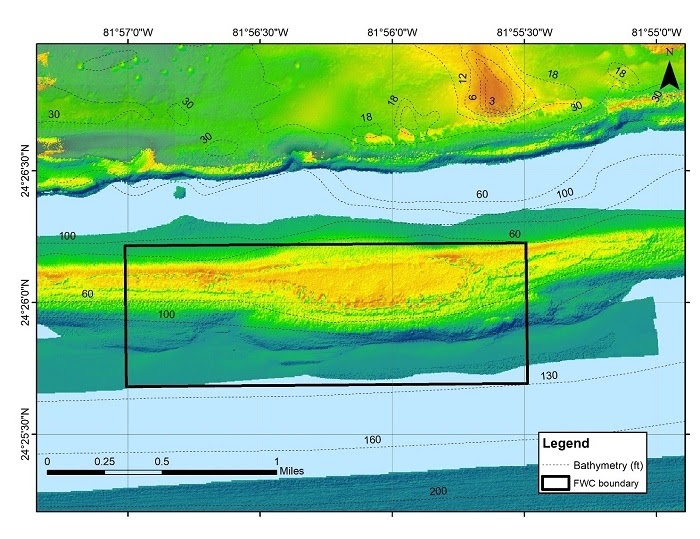FWC to protect fish spawning near Key West
Florida Fish and Wildlife Conservation Commission
At its February meeting, the Florida Fish and Wildlife Conservation Commission (FWC) approved a proposal to protect multi-species fish spawning aggregations near an area known as Western Dry Rocks.
“This decision is based on sound science conducted not only by FWC, but also by partners at Bonefish & Tarpon Trust,” said FWC Chairman Rodney Barreto. “This science-based recommendation has been endorsed by many of our major fishing and conservation groups: the American Sportfishing Association, Coastal Conservation Association, Bonefish & Tarpon Trust, Guy Harvey Ocean Foundation, International Game Fish Association, Lower Keys Guides Association, Wild Oceans and, most recently, the Congressional Sportsmen’s Foundation.”
“Looking at this from a conservation standpoint, staff has done a really good job of threading the needle,” said FWC Commissioner Robert Spottswood. “For some, it may be too short of a season and, for others, too long but this seasonal closure is an investment in continued healthy and robust fisheries in the Keys and south Florida.”
Western Dry Rocks, which is about 10 miles southwest of Key West, is an important spawning location for many recreationally and commercially important species, such as snapper, grouper and permit.
Starting April 1, 2021, all fishing is prohibited from April through July in a 1-square-mile area near Western Dry Rocks. The Commission also adopted a 7-year sunset provision, which primarily will be used as a way to ensure the Commission can revisit this closure and discuss future management in this area.
This area is bounded by
24°26.217’N, 81°57.007’W
24°25.676’N, 81°57.002’W
24°25.686’N, 81°55.489’W
24°26.227’N, 81°55.493’W
The protection of spawning aggregations, in combination with traditional management approaches, such as size limits, bag limits and vessel limits, represents a comprehensive conservation strategy aimed at sustaining and enhancing fish populations. A seasonal no-fishing closure at Western Dry Rocks would provide added protections for multiple species of spawning fishes while allowing fishing access for the remaining eight months of the year.
Top
At its February meeting, the Florida Fish and Wildlife Conservation Commission (FWC) approved a proposal to protect multi-species fish spawning aggregations near an area known as Western Dry Rocks.
“This decision is based on sound science conducted not only by FWC, but also by partners at Bonefish & Tarpon Trust,” said FWC Chairman Rodney Barreto. “This science-based recommendation has been endorsed by many of our major fishing and conservation groups: the American Sportfishing Association, Coastal Conservation Association, Bonefish & Tarpon Trust, Guy Harvey Ocean Foundation, International Game Fish Association, Lower Keys Guides Association, Wild Oceans and, most recently, the Congressional Sportsmen’s Foundation.”
“Looking at this from a conservation standpoint, staff has done a really good job of threading the needle,” said FWC Commissioner Robert Spottswood. “For some, it may be too short of a season and, for others, too long but this seasonal closure is an investment in continued healthy and robust fisheries in the Keys and south Florida.”
Western Dry Rocks, which is about 10 miles southwest of Key West, is an important spawning location for many recreationally and commercially important species, such as snapper, grouper and permit.
Starting April 1, 2021, all fishing is prohibited from April through July in a 1-square-mile area near Western Dry Rocks. The Commission also adopted a 7-year sunset provision, which primarily will be used as a way to ensure the Commission can revisit this closure and discuss future management in this area.
This area is bounded by
24°26.217’N, 81°57.007’W
24°25.676’N, 81°57.002’W
24°25.686’N, 81°55.489’W
24°26.227’N, 81°55.493’W
The protection of spawning aggregations, in combination with traditional management approaches, such as size limits, bag limits and vessel limits, represents a comprehensive conservation strategy aimed at sustaining and enhancing fish populations. A seasonal no-fishing closure at Western Dry Rocks would provide added protections for multiple species of spawning fishes while allowing fishing access for the remaining eight months of the year.
